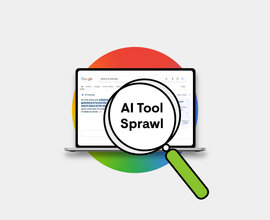Localization Strategy for Content Localization & Marketing
If you want to go global with your digital marketing, you’re going to need a localization strategy. And chances are, you and your team are gearing up for the jump -- almost two-thirds of global marketers have plans to expand into new countries in the next five years.
Taking over the world is a big ask -- how should you start? Here’s a step-by-step localization process to help you build an international digital marketing operation:
1. Set a measured timeline and realistic goals.
Going global is a marathon, not a sprint. It’s much better to take the time to be careful and thorough than to rush in and make a mistake that joins the neverending parade of notable localization gaffes. One infamous example of moving too quickly: in the late 1980s, KFC opened up shop in China without double-checking the Chinese translation of its iconic slogan “Finger-lickin’ good” and ended up exhorting potential customers to “Eat your fingers off” -- a call to action for the ages.
When it comes to planning global expansion, focus on what’s actionable and set realistic goals. Maybe you’ve done your research and have a revenue number you think is within reach, or maybe you’re just targeting precursors to revenue like lead generation and brand visibility. The important thing is to stay focused and avoid chasing every global opportunity that comes across your desk.
Use search data to measure local demand in potential new markets. This can help you decide which segments and markets to prioritize based on the size of the opportunity. WeWork partnered with Conductor to use search data to pick new building locations, and Conductor's Searchlight’s FlexHub Global Visibility Map can also help you visualize opportunity around the world.
2. Build a balanced global organizational structure.
How should a global business organize its marketing teams? If your global team at HQ is too dominant, you’ll have trouble making your local content seem truly authentic to targeted locales. And if your regional teams are too dominant, it will be difficult to piece together a coherent global marketing strategy.
In this aspect of your localization strategy, as with most things, balance is key. Your team at HQ needs enough authority to implement a centralized global marketing strategy, while your regional teams need enough authority to be able to put their local expertise to use. Build a global team at HQ with a strong knowledge of SEO so that it doesn’t make decisions that impede regional teams. Regional teams don’t have to have the same high level of SEO expertise, but they should have a deep understanding of how to speak to local customers.
The goals of HQ and regional teams should be harmoniously aligned -- regional teams should have local KPIs that make sense in the context of top-down standards formulated by the team at HQ. Within this framework, regional teams should be empowered to experiment and audit to discover successful local tactics that can be delivered back to HQ in a positive feedback loop. Tech like Conductor Searchlight that standardizes how global and regional teams share resources can make cross-team collaboration easier and less time-consuming.
3. Iron out any technical issues.
In order for your content to make an impact, you need to put it online in such a way that people can find it, and the technical complexities of localizing your digital presence can make this easier said than done. Nearly one-third of the global marketers we surveyed identified website navigation and structure as their biggest challenge. Lost in a thicket of different search engines, domain structures, and content management systems, potential customers can end up at the wrong site trying to read the wrong content in the wrong language.
So before you start expanding your global marketing operation in earnest, get your digital presence in order. Clarify your site structure (consider using subfolders instead of subdomains for language-specific sites), implement hreflang tags, and boost the number of local pages where necessary. A thorough site audit can help you pinpoint technical problem areas and discover solutions.
4. Don’t just translate -- localize.
Now, you need to populate your shiny new regional sites with localized content. Of course, you can’t just plug the content you already have into Google Translate and call it a day. Google Translate isn’t quite that good yet.
And, more importantly, good content localization is about more than just translation. Remember, search engines are trying to serve searchers the content most relevant to their queries. If you only translate your content, it won’t perform well if it doesn’t have local relevance.

Spotify has done an excellent job applying a meticulous localization strategy to taking over the streaming music world.
Localization in the music business is a particularly complex, thorny proposition. When streaming services like Spotify move into new markets, they must contend with bureaucratic local labels and varied licensing laws. Spotify makes careful navigation of these challenges a priority because it knows that to truly localize its business, it must bring local music from new markets onto its platform. The results speak for themselves — Spotify continues to dominate the music streaming industry, with almost twice as many paid subscribers as its closest competitor, Apple Music.
Good content localization is customer-first: speak the way your customer is speaking and give them value. To figure out how to capture the voice and concerns of a new market, you need to dig into the specifics of the area, from big-picture trends in culture, the economy, demographics, and government regulation to the specifics of local SERPs, search engineSearch Engine
A search engine is a website through which users can search internet content.
Learn more algorithms, and competitors. Consult with the local experts on your regional sales and marketing teams to build local target customer personas.
You might be surprised by what you find. For example, if you don’t do your research in Asia, you might not realize that Japanese women actually prefer vertical video to traditional horizontal video, or that Baidu, the largest search engine in APAC, indexes pages completely differently than Google does and doesn’t crawl JavaScript.
Put these learnings to use when localizing your existing content -- which might involve changing the content itself for greater local relevance -- and creating new, locally targeted content. Trust your regional teams to lead parts of the process, and consider investing in SEO technology that provides you with global insights.
5. Measure and report on your progress.
Reporting on many different local marketing campaigns in an international business can be challenging. You have your global standards to help you compare one region to another, but the local KPIs in one region might be different from the local KPIs in another region if they’re not applicable to both regions.
Take Moz’s Domain Authority score, for example. It’s a great metric for predicting the ranking of your website on Google, but it’s much less useful on Baidu because Moz dropped many Asian websites from its Domain Authority calculation.
It’s important to come up with a way to make sense of different KPIs between teams, and the right tool can help. Webmaster tools in individual search engines will give you deep, narrow insights, but tech that can track different metrics and SERP features across different search engines will give you the whole picture.
You also need reports that can be customized for everyone from the bottom to the top of the organization, from highly detailed technical reports for engineers and SEOs to visual, actionable trend reports for executives. Again, the right platform with flexible reporting capabilities can ensure that everyone in your organization knows what they need to know.
The right global SEO management software can power your localization strategy to new heights. Find out how Conductor can help your team.







